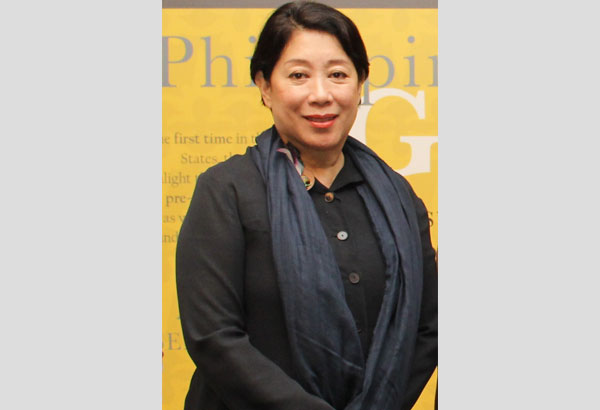History that is worth its weight in gold

Did you know we had kingdoms?” Doris Magsaysay Ho asked me during the launch of “Philippine Gold: Treasures of Forgotten Kingdoms,” a landmark exhibition that will run for the whole of four months starting on Sept. 11 at the Asia Society Museum in New York City. “(There were) kingdoms of Butuan, Agusan and Surigao.”
Though other kingdoms flourished during pre-Hispanic times, Magsaysay-Ho mentioned these sites as gold jewelry treasures, dating from as far back as the 10th century, were unearthed from them. While they still have actual currency today, their ultimate value lies in having been interwoven with strands of life and civilization into their designs — well-wrought and exquisite objects imprinted with history.
On loan from the Ayala Museum and Bangko Sentral ng Pilipinas, the gold collection tells a story of the Filipino people — even if their original wearers had not yet referred themselves as such. They are sparkling testimonies to well-established societies, robust maritime commerce, sophisticated craftsmanship and notions of power and beauty.

Doris Magsaysay Ho, chair of Asia Society Philippines, hopes that the over 120 spectacular gold objects in “Philippine Gold: Treasures of Forgotten Kingdoms” will give a more accurate view on the country’s pre-colonial past and be placed within “the historical scholarship in the Austronesian context.”
“We’ve been working on it for a whole year,” said Magsaysay Ho, the chair of the Asia Society Philippines, of their preparation. (Helping her in this initiative are Fernando Zobel de Ayala and Loida Nicolas Lewis.) “Basically, with APEC (Asia-Pacific Economic Cooperation) and the whole world being interested in the Philippines as far as the economic aspect of the country is concerned, we thought how wonderful it is to have a story about our culture and heritage.”
From necklaces, chains, waistbands and bangles to ritual bowls, implements, and ceremonial weapons, these artifacts will take center stage in giving New Yorkers (as well as its millions of visitors and the sizeable Fil-Am community) a glimpse of how we were, before the so-called civilizing missions of the West. Other pieces from the Metropolitan Museum of Art in New York, Musee du Quia Branly in Paris, the Lilly Library in Indiana and a few pieces from the personal collection of the Locsin family will supplement and expand the exhibition’s narrative forged in precious metal.
For Magsaysay Ho, it is important that the collection will ease its way into history books and find its place in the larger story of human civilization. “One of our goals is to have a scholarship on these (gold pieces) really established and understood,” she said. “We want people to know about the pre-Hispanic gold in the Philippines so it can find its place in history. The symposiums in the States will focus on how our gold is placed in relation to Southeast Asia.”
One such symposium is “Encounter with Early Gold,” which will be led by the “Philippine Gold” curators Nina Capistrano-Baker, former director of Ayala Museum and Adriana Proser, the John H. Foster Senior Curator for Traditional Asian Art at Asia Society New York. The talk will feature new scholarship re-examining “our understanding of Asian peoples in the context of gold trade and movement between the 10th and 13th centuries.” Joining the curators are M.J. Louise Bolunia, the chief archaeologist of the National Museum, Philippines and John Guy, the Herbert Irving Curator of South and Southeast Asian Art at the Metropolitan Museum of Art.

Gold jewelry pieces, such as this ear ornament from Eastern Visayas, proves that well-established societies, robust maritime commerce and sophisticated craftsmanship existed during pre-Hispanic times.
For Capistrano-Baker and Proser, the exhibition is significant “because it provides stunning evidence that the Philippines had a sophisticated culture before Western contact. The superior quality of the gold ornaments also dispels the Western stereotype of pre-colonial Filipinos as ignorant and primitive savages before the civilizing influences from Spain and America.”
They hope that the “Philippine Gold: Treasures of Forgotten Kingdoms” will further generate research, discourse and scholarship on pre-colonial Philippines and, in the process, “deepen our sense of who we were as a people before Islam and Christianity arrived at our shores, and the multi-layered, collective past that makes us who we are today.”
* * *
For details, visit www.AsiaSociety.org/Philippines2015. To arrange a group tour, call +1 212.327.9237 or email philippinegold@asiasociety.org.



















